
Shindig Magazine’s Pat Curran talks with author Mark A. Moore About Working on Carnival of Sound
Shindig: It’s a beautiful package. Are you pleased with the result of what was obviously a labour of love?
Mark A. Moore: I’m very pleased with how it turned out. Producer Andrew Sandoval did a terrific job of helming this project, and Steve Stanley’s design and layout reflect the era beautifully. The whole team at Rhino Handmade and Warner Music Group did an outstanding job.
S: The sleeve notes detail why the album was shelved at the time. Why did it take another 40 years to be reissued?
M: For years, Jan’s Warner Bros. recordings didn’t have an advocate. Jan & Dean’s business relationship was terribly strained in the mid- to late ’60s; and by the early ’70s, Jan was moving ahead with his solo recordings. As good as Paul Morantz’s 1974 Rolling Stone article was—a landmark piece of Jan & Dean journalism—it failed to mention the Carnival of Sound sessions, basically skipping from the accident to Jan’s solo recordings. That was a big blow to the project’s visibility. When the Jan & Dean film Deadman’s Curve (based on Paul’s article) aired in 1978, the Carnival era of Jan’s recording career (1966-1968) was omitted completely. So we had this big watershed event that re-introduced Baby Boomers to Jan & Dean, while spawning legions of younger first-time fans—with no mention of Carnival. The film helped get Jan & Dean back on the road on the nostalgia circuit, while inaccurately portraying their musical history. It didn’t even show Jan producing the music. But in the ’80s, Los Angeles pop aficionados like Darian Sahanaja and Domenic Priore were starting to champion the Warner Bros. sessions, and really helped spread the cult of Carnival. Darian is now a member of Brian Wilson’s band, and Dom is an author and expert on California pop culture of the ’60s. Rhino Handmade considered an official Carnival release a decade ago, but it fell through. Rhino is a Warner Music Group company, and they were basically sitting on their own masters all this time (from Warner Bros. Records), so licensing wasn’t an issue. When Andrew Sandoval finally got the green light for a release, he felt kind of embarrassed it had taken so long. But all the pieces came together at the right time for this 2010 release. By then, I had done enough research to really help put this album in its proper historical context, with session dates and other information—collaborating with Domenic and Andrew on a strong contextual framework to complement the effort Andrew and Dan Hersh put into remastering the album.
S: Was there anything left in the vaults?
M: There’s a partial backing track (several takes) for “Light My Fire,” which Jan was covering before the Doors released it as a single. You can hear Jan producing the session. There’s also some studio chatter, where you can hear longtime Jan Berry compatriots like Glen Campbell, Hal Blaine, and Roger Christian. Let’s hope this Carnival of Sound release sells out. I’d love to see a follow-up featuring some of these snippets, along with the backing tracks (without vocals), and the incredible “a cappella” vocals for songs like “Hawaii,” “Fan Tan,” and “Love & Hate.”
S: I was pleased to see that Dean Torrence designed the front and back cover and contributed a note. Was he amicable to being involved?
M: Andrew Sandoval noted that Dean spent several days working on the “Jan & Dean” hand lettering. Dean obviously took some time and care with the cover art. He’s a Grammy award-winning graphic designer, and the lettering is vintage Kittyhawk. Over the years, Dean has created some fantastic album designs, ranging from his own group to the Beach Boys, Harry Nilsson, Linda Ronstadt, Steve Martin, and others. It’s a real treat for fans to have Dean contributing artwork for Carnival of Sound.
S: How closely did you work with Andrew Sandoval?
M: Andrew is the guy I worked with most on the project. In June 2009, Domenic Priore and I hung out in Central Park in New York City and discussed collaborating on what became the opening essay in the liners. Andrew and I then put together the “Chronology of Sound” section. We batted the whole thing back and forth for several months, adding quotes from participants, editing and tweaking, until we had what we wanted.
S: I was amazed by the difference in the versions Jan turned over to WB and the bootlegged ones I have.
M: Well, the bootlegs were generated from poor quality sources, like acetates and multiple-generation tapes. Also unfinished versions and alternate takes. Sound-wise, there’s simply no comparison. Until now, almost no one has heard this music from the original master tapes. Andrew and Dan did a wonderful job of bringing out the details in the mono versions. You can really hear the fuzz bass and other nuances.
S: There are also marked differences between Jan’s mono tapes and the stereo multi tracks.
M: The new stereo mixes by Andrew—especially on tracks like “Hawaii,” Fan Tan,” and “Love & Hate”—are a revelation. “Louisiana Man” and “Stay” feature vintage Jan Berry brass and woodwind arrangements, and are well served in stereo. The backing track for “Laurel & Hardy (featuring Jan’s “La-La” melody guide) is dense and powerful. The new stereo mixes are meant to open things up a bit, so listeners can get a better idea of what’s happening in the more complex arrangements. It’s important to remember that Jan was working with essentially the same team he worked with before the accident, plus a few newcomers.
S: It’s also interesting now that it’s finally released to compare the original productions with the enhanced versions you released on the tribute album Encomium In Memoriam Vol One.
M: Jan and his team wrote some really nice vocal harmony lines for “I Know My Mind.” It’s surprising to me that they weren’t used, given the top-flight singers on hand for the project. But there they were, all written out note for note, so Cameron Michael Parkes and I incorporated them into our version of the song. Same with the string arrangement for “Laurel & Hardy”. Though unused for Carnival of Sound, those parts are unique and reflect authentic Jan Berry arrangements for the original project.
S: It’s a real shame Carnival Of Sound and Save For A Rainy Day didn’t get released at their time of origin as I’m sure both Jan and Dean would be viewed in a different light today.
M: We’ll never know exactly what kind of impact the albums would have made in their time, but Jan & Dean would almost certainly be viewed more critically today. Their growth as musicians, arrangers, and producers (both of them) would be more acknowledged than they are currently. The two Warner Bros. singles got little promotion (and weren’t the best choices available for release). But the breakdown of a deal between Jan, Dean, Columbia Records, and Screen Gems—which would have allowed the release of Dean’s previously self-issued Save For A Rainy Day and a follow-up with music that ended up on Carnival of Sound—was a real back breaker. As happened so many times in Jan & Dean’s career, they were “this close” to something really good happening, only to see it fall apart. Their ’63 TV pilot? Unreleased. Film roles in Ride the Wild Surf in ’64? Never happened. Starring roles in their own ’65 feature film? Ended by a train accident and a broken leg. Their promising ’66 TV pilot, which could have been a lucrative vehicle for new music? Killed by Jan’s auto accident. Save For A Rainy Day and Carnival of Sound in their original era? Snuffed out by music industry politics and a strained relationship that reached a breaking point—a situation made worse by Jan Berry’s new challenges with traumatic brain injury. Rainy Day eventually found release on Sundazed in ’96, and now Carnival is out in its original sound quality in 2010. Much as the Beach Boys had their earlier catalog re-evaluated after Pet Sounds and “Good Vibrations,” I think some will continue to re-evaluate Jan & Dean, viewing them more and more through the additional lens of these “lost” transitional projects. And the more people understand that Jan & Dean were part-time musicians pursuing college degrees before Jan’s accident, the more they’ll appreciate the duo’s achievements and lost opportunities.
S: ‘The most bitchen records I ever made’ (Jan 1967). Since he really valued these tracks it’s a great pity Jan never lived to see them released.
M: No question, Jan would have been thrilled to see this release. While the era undoubtedly held some bad memories for him, Carnival of Sound was the first music project that lit a fire under Jan after the accident, fueling his determination to return to the studio. In 1967-68, between bouts of depression, he was quite manic about recording new music. And he had a far-ranging support system—family, friends, the Wrecking Crew, and the best studio singers in Hollywood. Arranging and producing Carnival of Sound prepared Jan for his solo work in the ’70s—and for singing on his own again.
S: What’s next? Any chance of Port to Paradise, or the Ode singles or even a box set being released?
M: There are lots of possibilities for future Jan & Dean releases. With many artists who enjoyed less success getting the box set treatment, Jan & Dean are long overdue for an in-depth boxed set. There’s certainly enough good material for it. How about Jan Berry and Brian Wilson working in the studio together on “Ride the Wild Surf”? The sessions are there, just waiting to be heard. How about the original concept for Filet of Soul? A number of Jan’s solo recordings from the ’70s were released digitally in December 2008. But there are some great extras that would really help fill out a release of Jan’s Ode and A&M tracks. We have great material for liner notes, and input from Jan’s collaborators at the time—Jim Pewter and Alan Wolfson—would be guaranteed. The music industry is changing so much. Digital is becoming the norm, while physical product is becoming a thing of the past. Thank goodness we still have companies like Rhino Handmade that will issue special editions.
Shindig Magazine (England)
Extended interview with Mark A. Moore, reprinted with permission of Pat Curran and Shindig (2010)
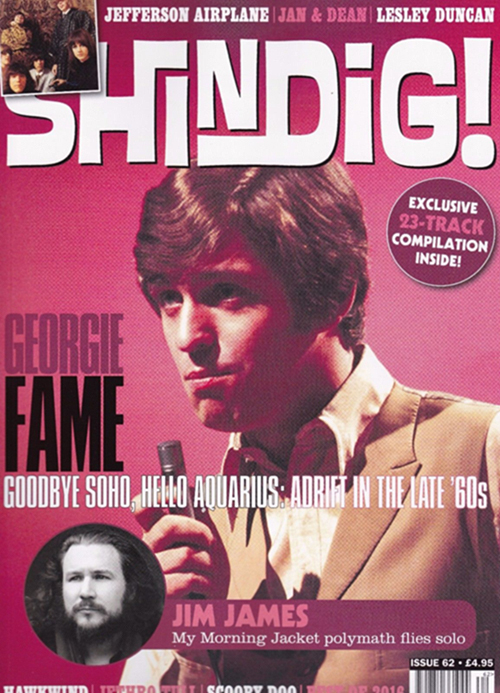
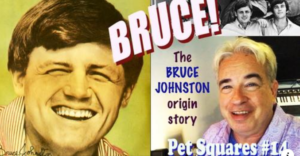
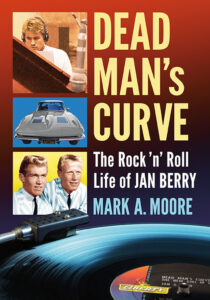
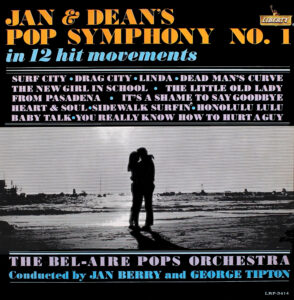
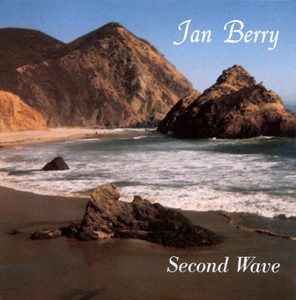
More Stories
Jan Berry and Bruce Johnston
Interview with Author Mark A. Moore on the Publication of Jan Berry’s Original Music Scores from the 1960s
Shades of Cool — An In-Depth Interview with Author Mark A. Moore